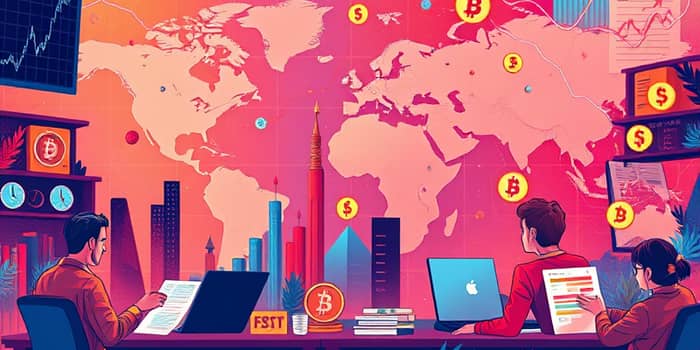
Financial markets are more than just ticker symbols and daily closing prices. They are living narratives shaped by geopolitical tensions, technological innovations, and human behavior. In 2025, navigating this complex landscape requires both a clear understanding of macro trends and practical strategies for resilience.
In this exploration, we delve beneath the surface, revealing the forces that matter and offering actionable insights to stay ahead of the curve.
After the unprecedented rebound following the pandemic, the global economy in 2025 is projected to grow at a modest 2.9%, its slowest pace since COVID-19 disruptions. This moderation reflects both cyclical headwinds and structural challenges.
Heightened trade barriers and evolving U.S. policy stances have injected uncertainty into corporate planning and consumer confidence. While central banks in many regions may cut rates in response to lower inflation, the U.S. Federal Reserve is expected to maintain its stance until at least March 2026, citing persistent price pressures.
Trade tensions have reshaped supply chains and redefined growth prospects. Even if all tariffs were removed, growth is unlikely to return to pre-2018 levels, as companies and nations adapt to a more fragmented landscape.
Deglobalization, fueled by geopolitical rivalries, is compounding macro-financial volatility. Emerging markets, in particular, feel the pressure of shifting capital flows and currency swings.
Inflation is easing globally, settling around 2.1% in 2025 and 2.0% in 2026, except in the United States where pressures linger. The result is a delicate balancing act for policymakers who must support growth without reigniting price spikes.
Capital markets responded with a sharp sell-off in early 2025, recording a peak-to-trough correction drop of over 10% from the February high. Such swings underscore the importance of stress testing portfolios and maintaining liquidity cushions.
The financial sector is undergoing a metamorphosis. Digital platforms are redefining payments, lending, and asset management. Traditional banks face competition from nimble fintech firms and peer-to-peer lenders.
Non-bank institutions are stepping in to fill financing gaps, highlighting the rise of expanding non-bank credit financing sources. Investors should assess counterparty risks while embracing opportunities in alternative credit markets.
At the same time, cutting-edge decentralized finance innovations are challenging regulatory norms, offering new channels for capital allocation, and potentially improving transparency and access.
Beyond immediate policy and economic shifts, three megatrends will influence markets for decades to come:
These long-term currents demand a forward-looking approach, balancing short-term risks with sustainable growth themes.
In a world of uncertainty, adaptability is key. Investors can fortify portfolios through:
Regular portfolio reviews, rebalancing, and scenario analysis help guard against unexpected shocks. Technology tools—from AI-driven analytics to automated risk monitors—can enhance decision-making under pressure.
Although headlines often focus on downside risks, market dislocations create fertile ground for astute investors. A plausible soft landing scenario outlook offers a narrative of moderate growth with contained inflation, rewarding those with patience and flexibility.
Embracing structural shifts—whether in digital finance, decarbonization, or demographic trends—can yield outsized returns over the next decade. The key is to stay informed, manage risk proactively, and remain open to innovation.
By understanding the real story behind the numbers and adopting disciplined strategies, investors and organizations can not only weather the storms of 2025 but also harness its transformative potential. The headlines may swirl with uncertainty, but beneath the noise lies a wealth of opportunity for those prepared to dig deeper.
References













